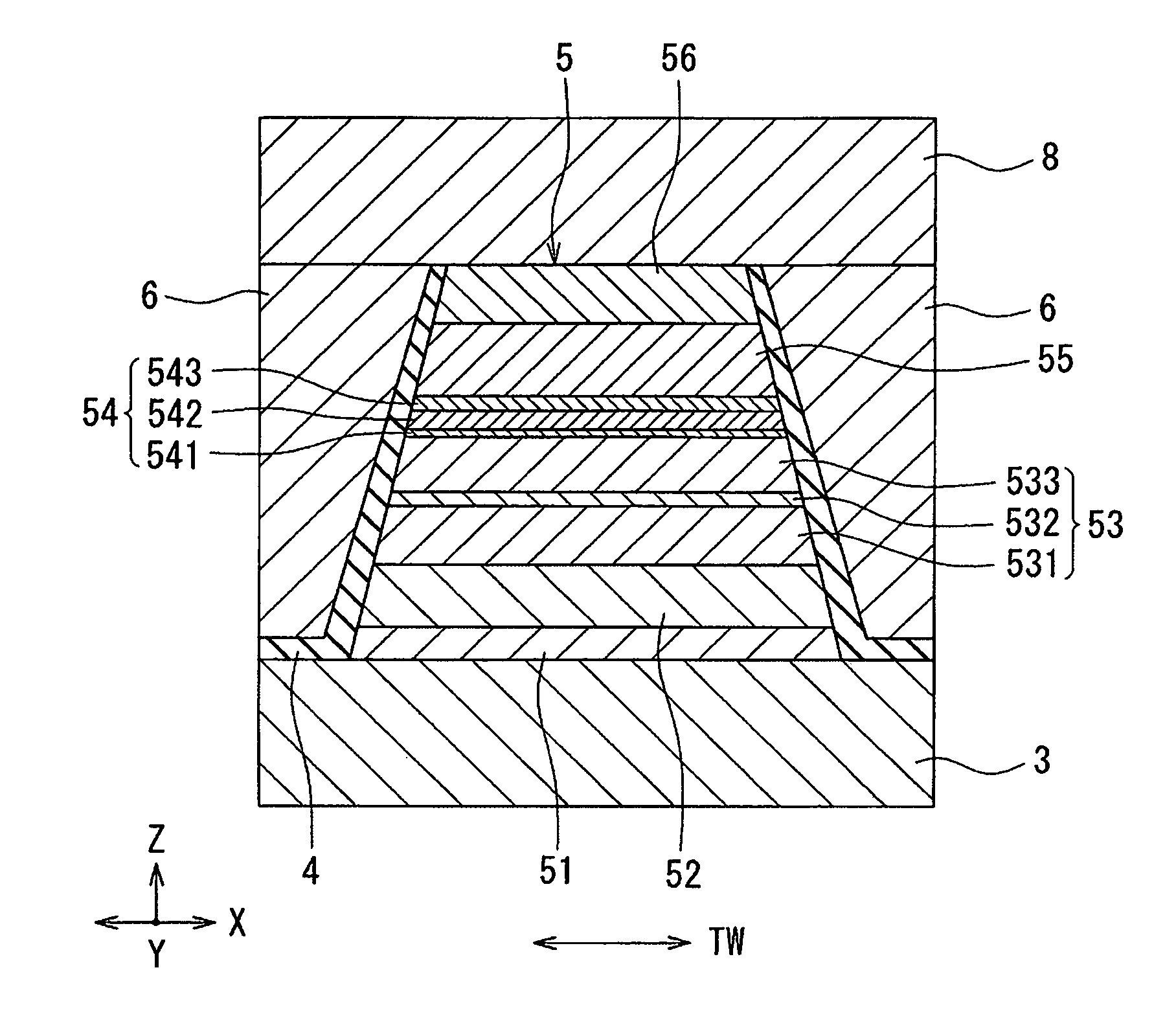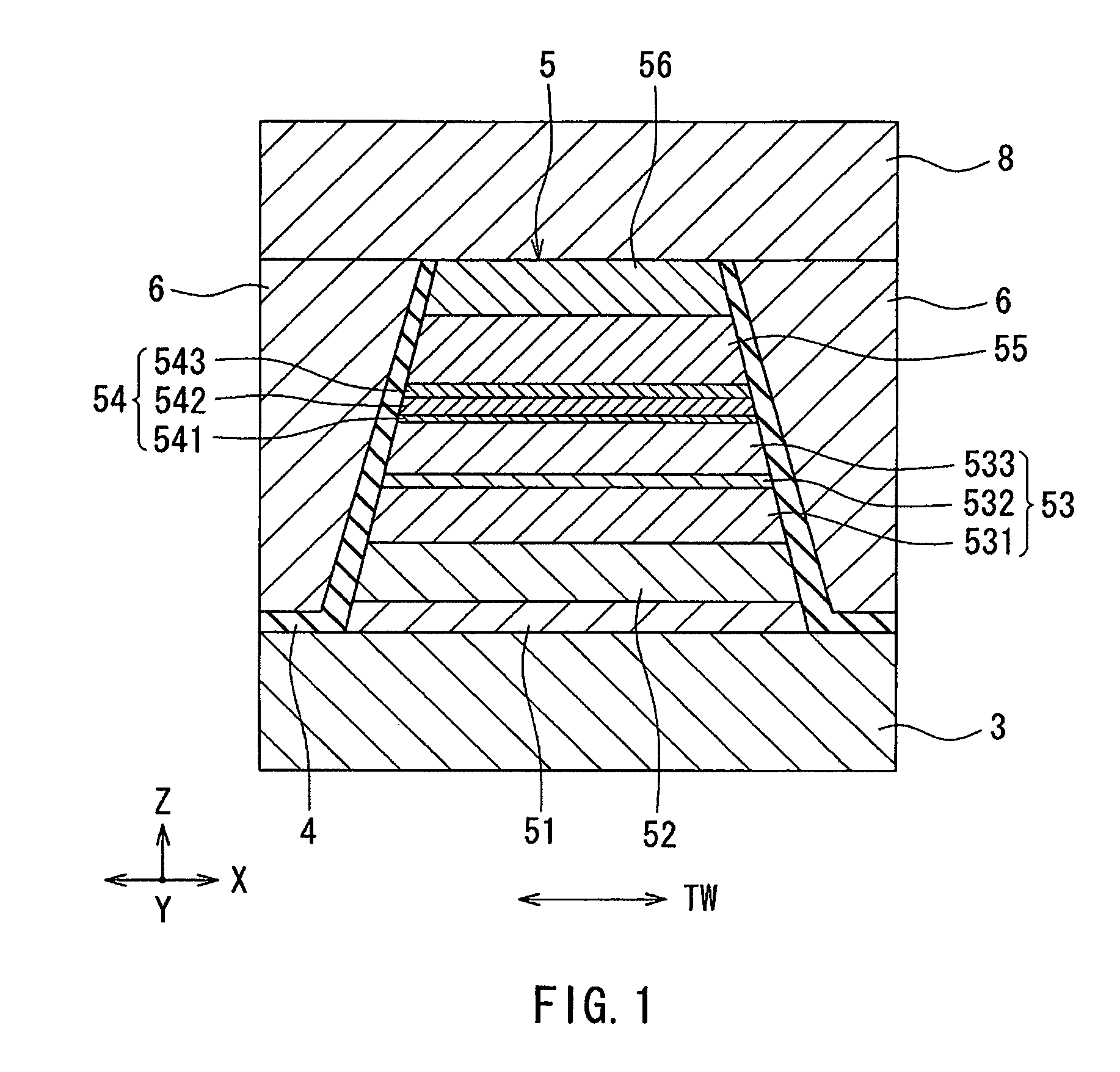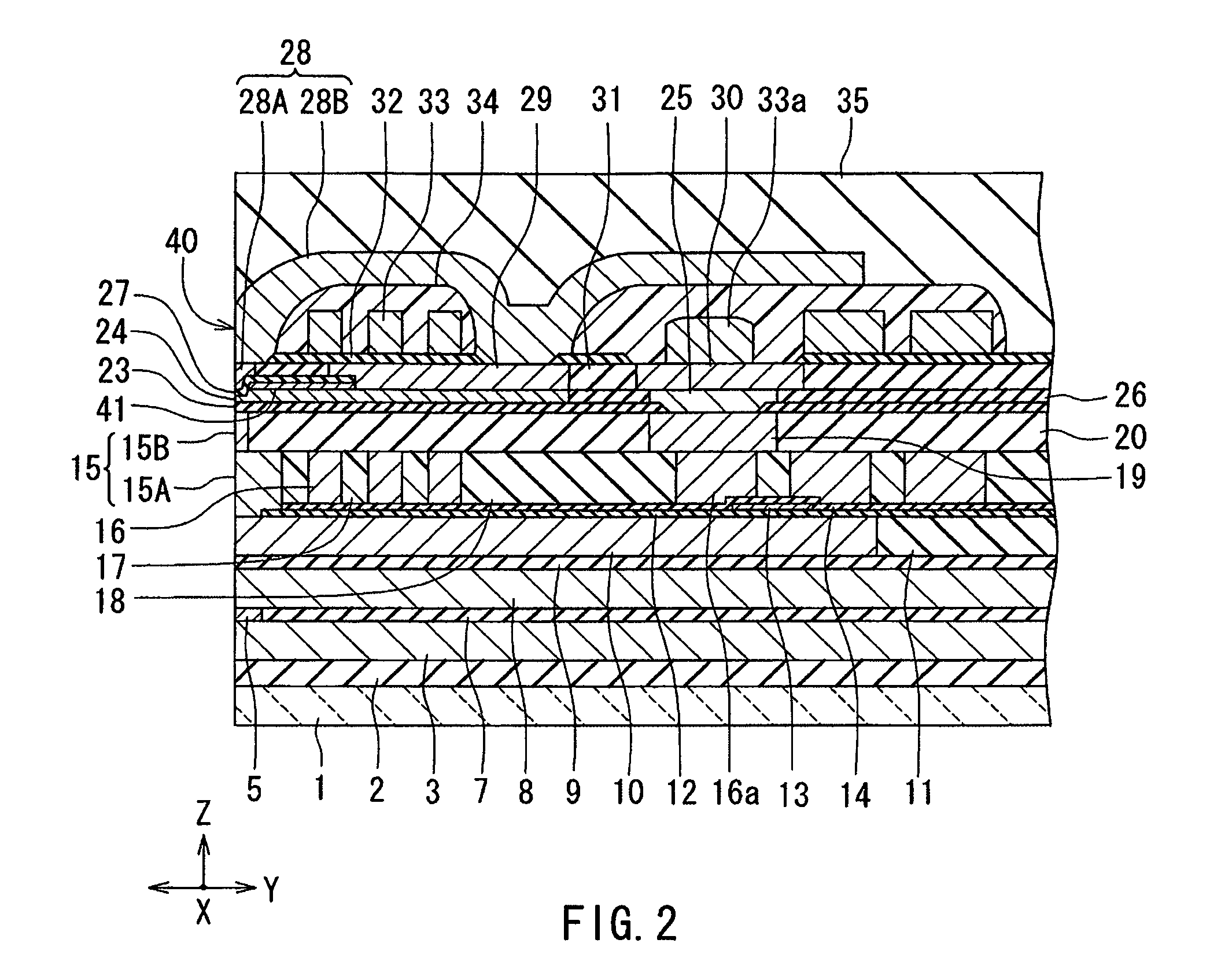CPP-type magnetoresistive element including spacer layer
a magnetoresistive element and spacer layer technology, applied in the field of magnetoresistive elements, can solve the problems of limited operation current, small amount of magnetoresistance change of cpp-gmr element, and inability to obtain a sufficiently high value for the magnetoresistance change ratio, and achieve the effect of high mr change ratio
- Summary
- Abstract
- Description
- Claims
- Application Information
AI Technical Summary
Benefits of technology
Problems solved by technology
Method used
Image
Examples
first embodiment
[0046]Embodiments of the present invention will now be described in detail with reference to the drawings. First, with reference to FIG. 4, a description will be given of a slider 210 including a thin-film magnetic head (hereinafter, simply referred to as magnetic head) according to a first embodiment of the invention. The magnetic head according to the present embodiment is for use in perpendicular magnetic recording. In a magnetic recording device, the slider 210 is disposed to face a circular-plate-shaped recording medium (a magnetic disk) that is driven to rotate. In FIG. 4, the X direction is a direction across the tracks of the recording medium, i.e., the track width direction. The Y direction is a direction perpendicular to the surface of the recording medium. The Z direction is the direction of travel of the recording medium as viewed from the slider 210. The X, Y, and Z directions are orthogonal to one another. The slider 210 has a base body 211. The base body 211 is nearly...
second embodiment
[0134]A second embodiment of the invention will now be described with reference to FIG. 14 to FIG. 17. FIG. 14 is a cross-sectional view showing a cross section of a read head including an MR element according to the present embodiment, the cross section being parallel to the medium facing surface. The read head in the present embodiment has a first read shield portion 93 and a second read shield portion 98 instead of the first read shield 3 and the second read shield 8 of the first embodiment, and has an MR element 105 according to the present embodiment instead of the MR element 5 of the first embodiment. The MR element 105 and the second read shield portion 98 are stacked in this order on the first read shield portion 93. The planar shape (the shape viewed from above) of the MR element 105 is smaller than that of each of the read shield portions 93 and 98. The insulating layer 4 of the present embodiment covers the two sides of the MR element 105 and a rear end of the MR element ...
PUM
| Property | Measurement | Unit |
|---|---|---|
| thickness | aaaaa | aaaaa |
| thickness | aaaaa | aaaaa |
| thickness | aaaaa | aaaaa |
Abstract
Description
Claims
Application Information
 Login to View More
Login to View More - R&D
- Intellectual Property
- Life Sciences
- Materials
- Tech Scout
- Unparalleled Data Quality
- Higher Quality Content
- 60% Fewer Hallucinations
Browse by: Latest US Patents, China's latest patents, Technical Efficacy Thesaurus, Application Domain, Technology Topic, Popular Technical Reports.
© 2025 PatSnap. All rights reserved.Legal|Privacy policy|Modern Slavery Act Transparency Statement|Sitemap|About US| Contact US: help@patsnap.com



